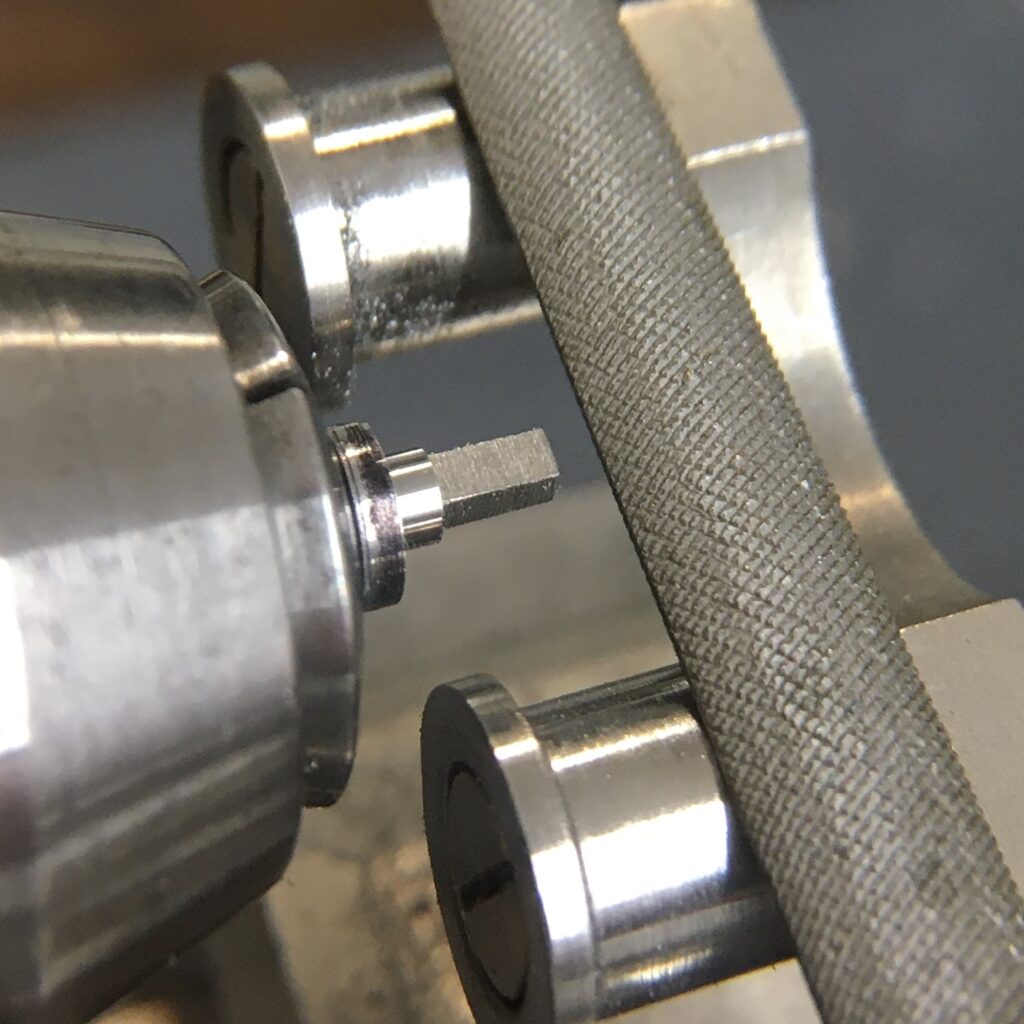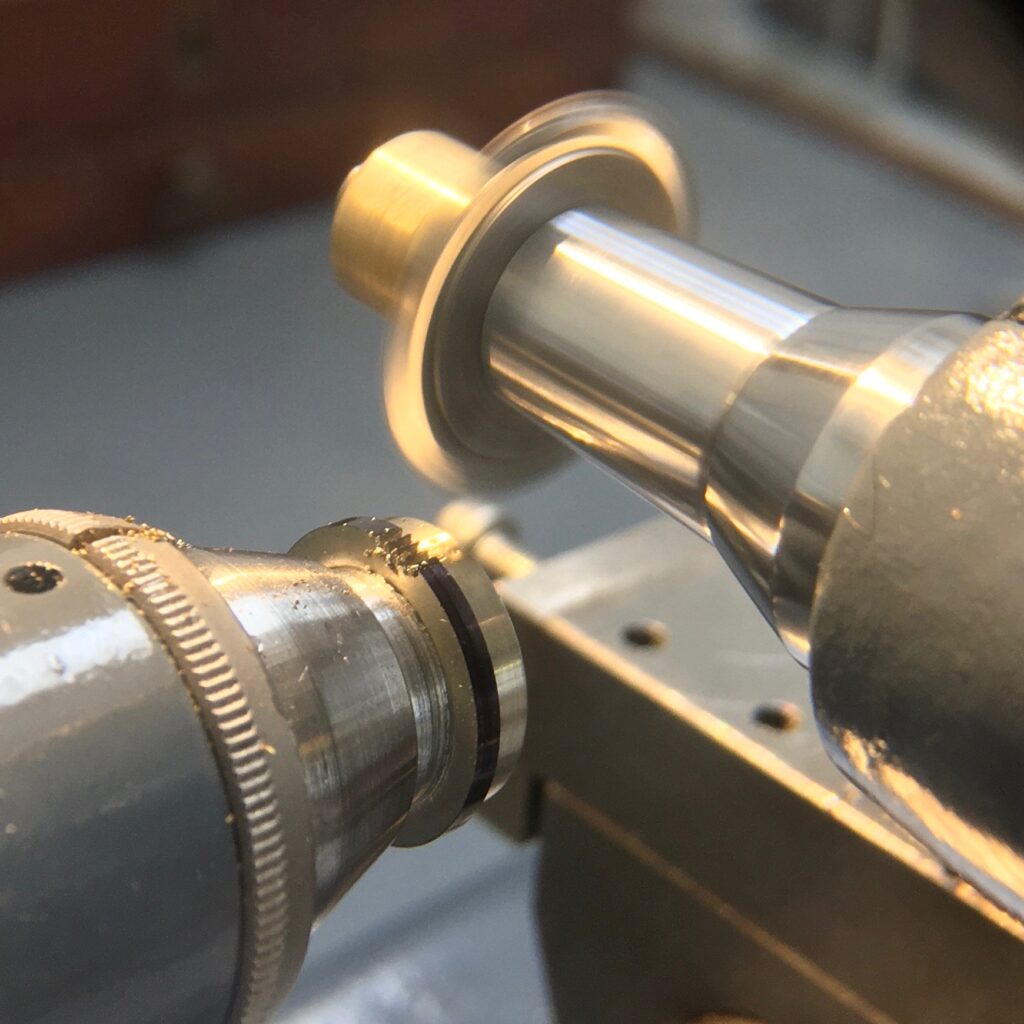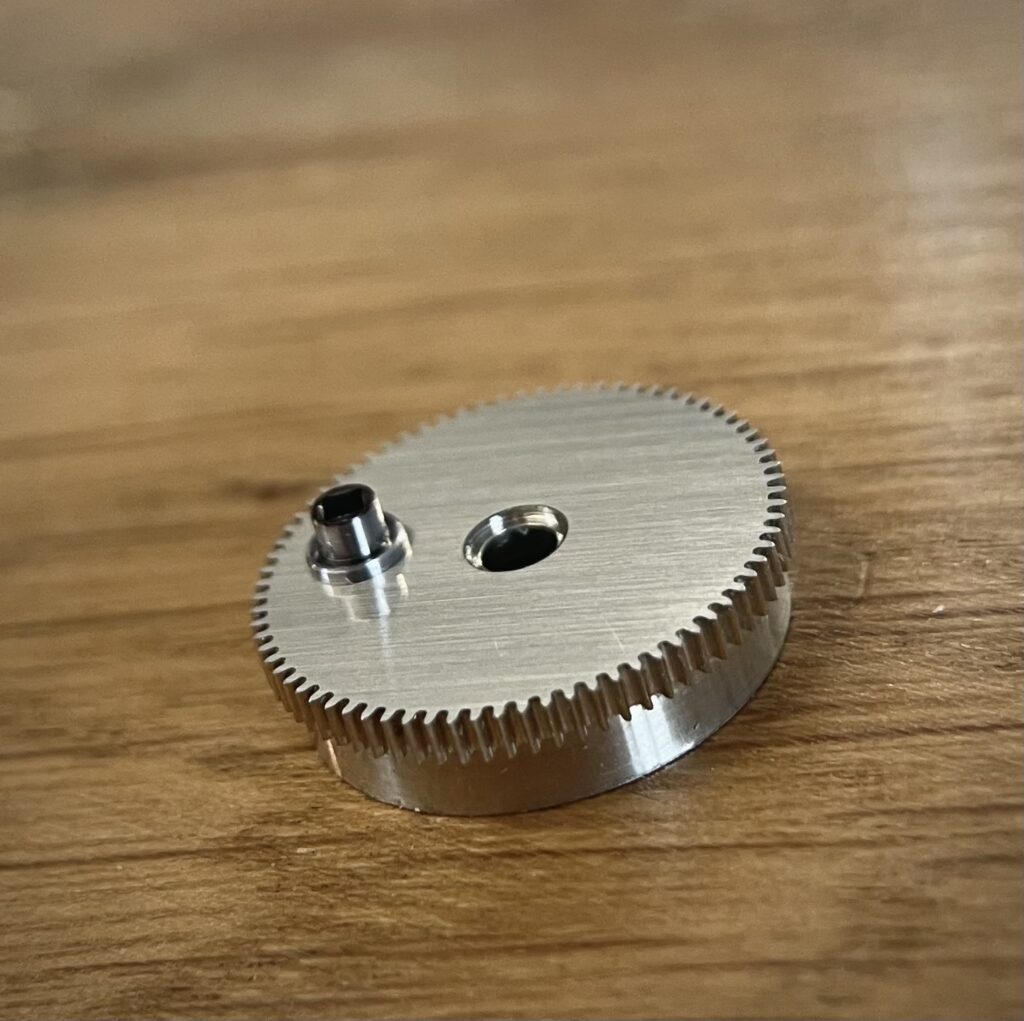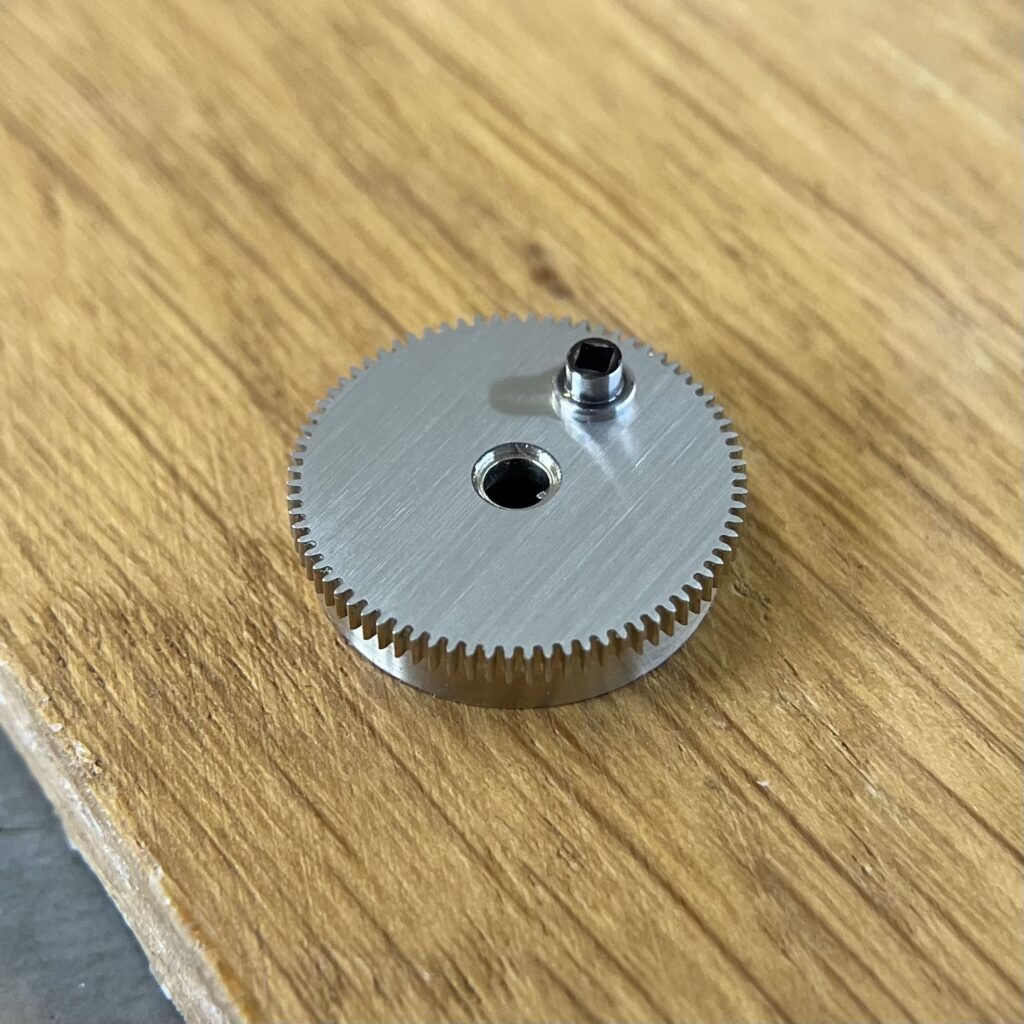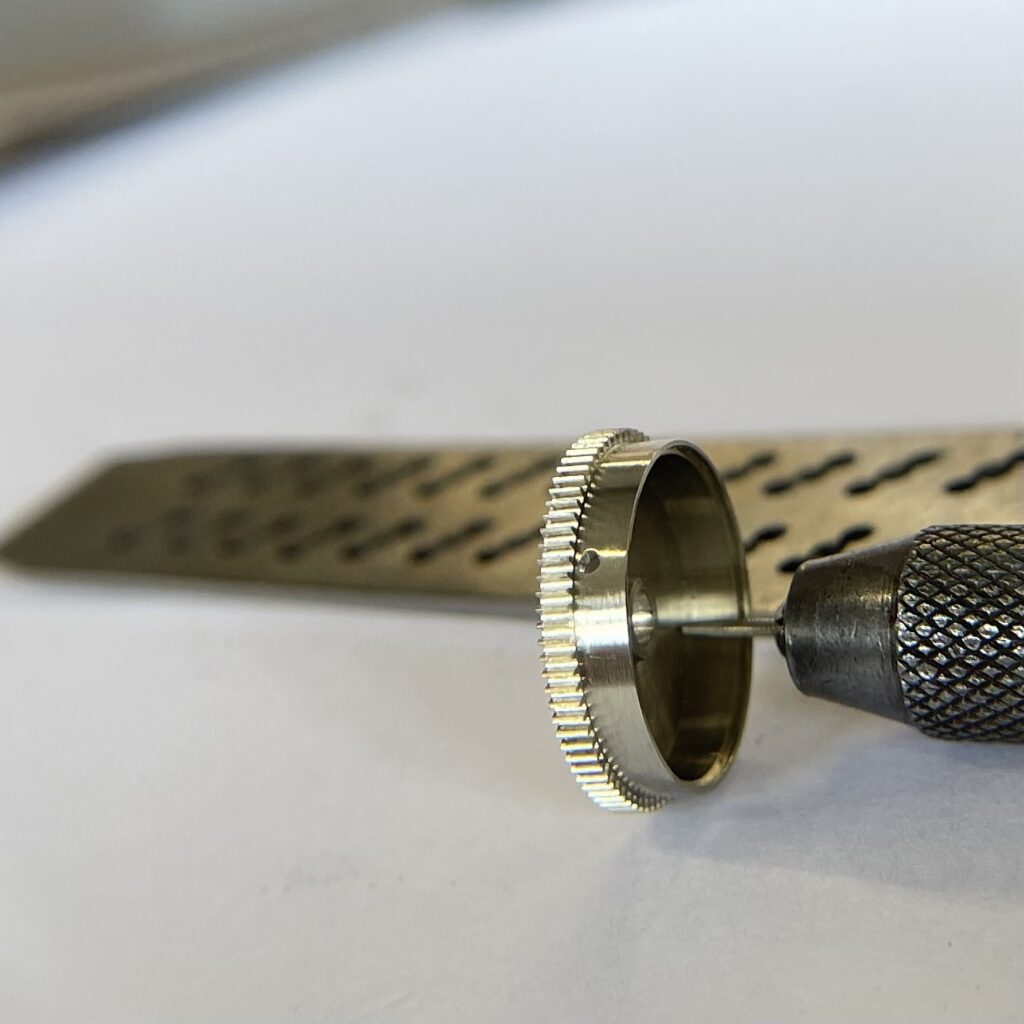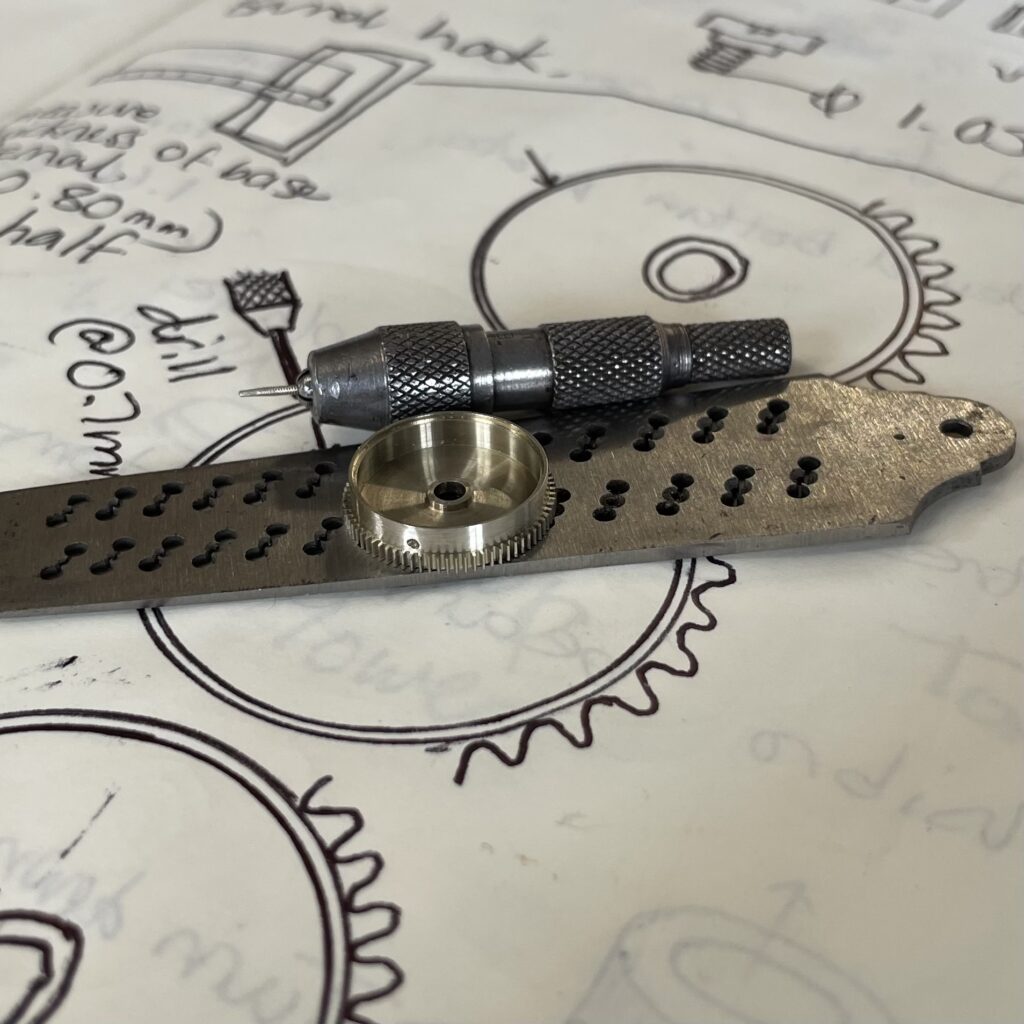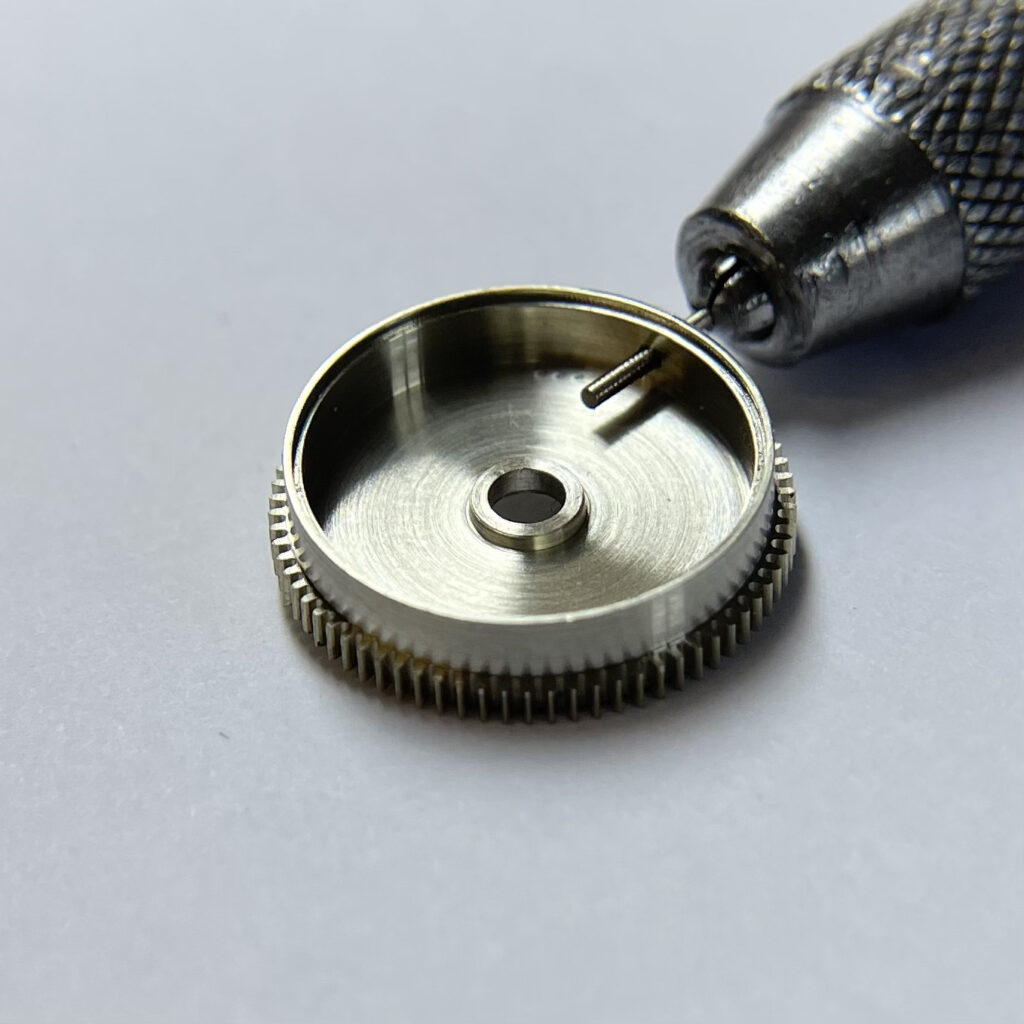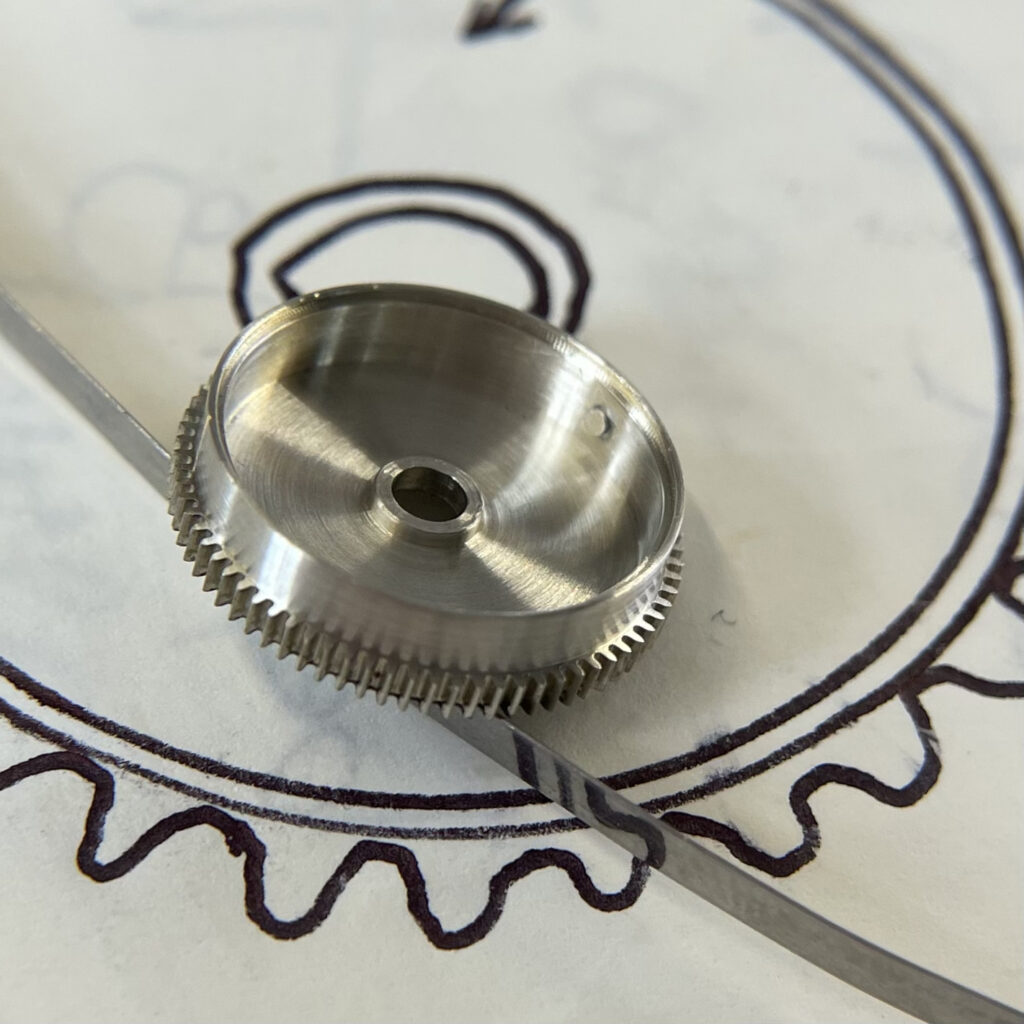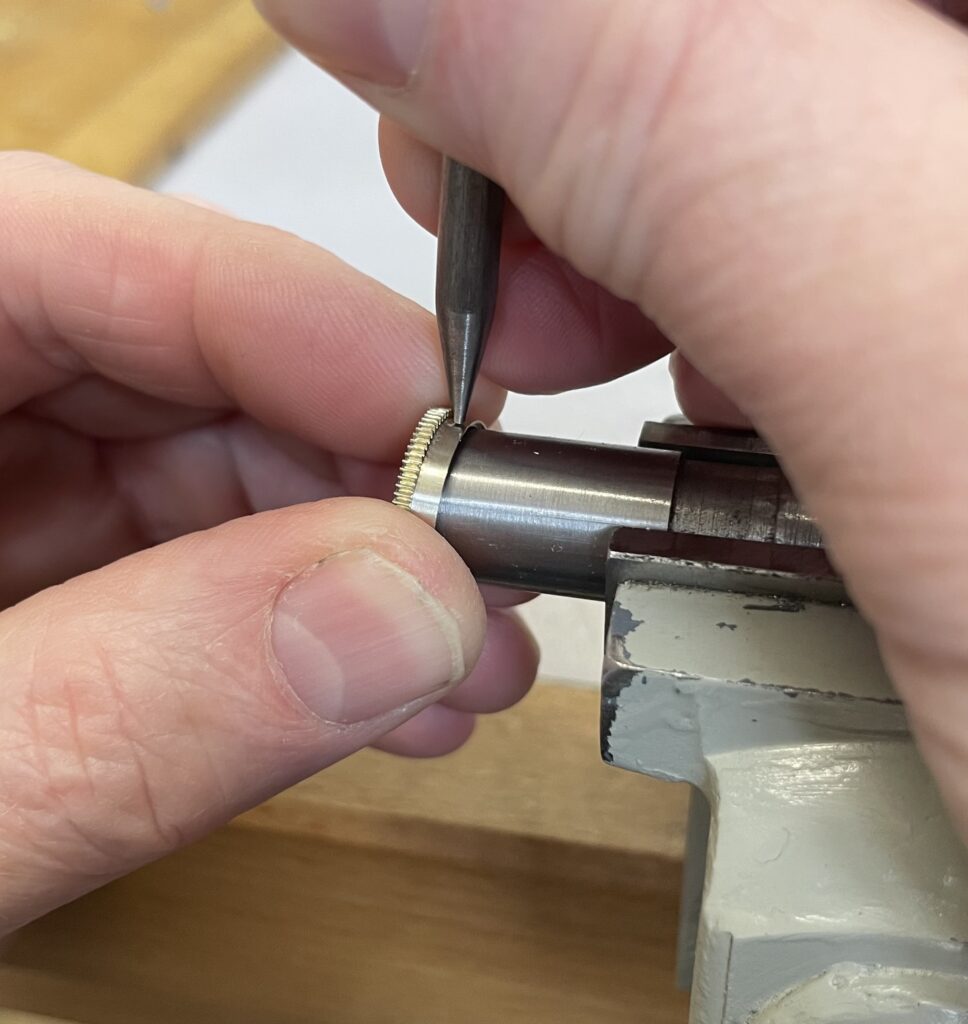
There are many hidden processes that go into making a watch mainspring barrel.
Making our first in-house movements has been a huge learning curve. Knowing how many components go into even the most basic of mechanical movements is no preparation from making each and every one from scratch using traditional and often centuries old techniques.
Mainspring barrels and arbors are one of the most deceptively challenging.
They start out as solid coins of German silver metal for the barrel and steel bar for the arbor. We turn into them on our 8mm lathes to create their basic forms before cutting in the teeth.
The hookings, one in the inside barrel wall and the other in the arbor, take all of the strain from the mainspring when it’s fully wound. For added strength, the outer hooking is screwed into the barrel as well as being riveted.
The arbor goes through turning and hand filing to form its complex series of shapes, all of which need to be accurate to within a few hundredths of a millimetre to function correctly both within the barrel and then the barrel and arbor within the watch movement itself. Even the smallest mistake and the entire component needs to be scrapped and started again.
Although they’re not the smallest components by a long way they’re some of the most complicated to make. As there are few opportunities to learn these skills from someone in person, we’re greatly indebted to George Daniels’s book Watchmaking which has been an invaluable reference for Project 248.
Click through the gallery below to view photographs of the process.
